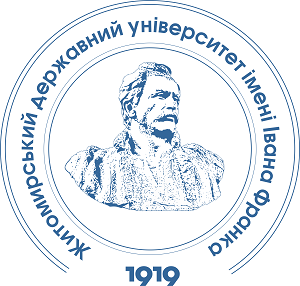CULTIVATION MEASURES OF POTATO SEED MATERIAL OBTAINED IN MERISTEM CULTURE IN VITRO
DOI:
https://doi.org/10.32782/naturaljournal.10.2024.10Keywords:
hydroponics, aeroponics, minibulbs, growing conditions, biotechnological methods, adaptive potentialAbstract
Today, the provision of high-quality potato seed material is one of the key problems of the agricultural sector, since it is the healthy seed fund that determines the yield and resistance to viral diseases. Traditional breeding methods are often accompanied by the accumulation of viral infections and pathogens, which negatively affects the productivity and quality of crops. This necessitates the search for innovative technologies that can ensure rapid reproduction of potatoes with minimal loss of quality and without the risk of infection. The use of biotechnological methods, in particular microclonal propagation in vitro, becomes critical for solving these problems. However, questions arise regarding the selection of optimal conditions for the cultivation of microtubers and their adaptation to open ground. At this stage, it is important to determine the most effective nutrient media and growth regulators that affect the intensity of formation and the number of tubers. The main task is the development and optimization of microclonal potato propagation technologies to obtain high-quality virus-free planting material. Additionally, it is important to solve the problems of adaptation of minibulbs to the conditions of the open ground and to investigate ways to increase the germination rates at the in vitro – ex vitro stage. Achieving these goals will contribute to increasing the efficiency of sustainable agricultural production and ensuring consistently high yields of potatoes. Propagation of minitubers in the field is an important stage in the production of healthy and highly productive potato seed material. The implementation of agrotechnical measures in combination with disease control allows to achieve high yields and improve the quality of minibulbs. This process requires careful adherence to technology, especially in the early stages of plant growth, to avoid crop losses due to disease and adverse weather conditions. In the future, the implementation of the results of this study can contribute to increasing the competitiveness of the agricultural sector of Ukraine, improving the quality and availability of seed material for commodity producers. In view of global challenges such as climate change and population growth, innovative approaches to potato cultivation are becoming especially important to ensure food security. It is important to investigate the possibility of obtaining minibulbs from meristem plants and potato minibulbs during their rooting at the in vitro – ex vitro stage with subsequent collection of minibulbs and cultivation in open ground. At the same time, additional seed material from mini tubers is expected after passing the stage of their awakening in the conditions of one vegetation year in closed soil conditions.
References
Бондарчук А.А., Верменко Ю.Я., Рязанцев В.Б., Рязанцев М.В. Біотехнологія в насінництві картоплі. Вінниця. 2016. С. 42–43.
Кузьменко А.М., Палій Ю.І. Управління поливом при вирощуванні мінібульб. Аграрні технології України. 2018. № 2(1). С. 45–49.
Сидоренко В.П. Особливості підготовки ґрунту для мінібульб. Аграрний вісник. 2019. № 11(5). С. 22–26.
Федоров Л.Г. Роль добрив у вирощуванні насіннєвої картоплі. Журнал аграрної хімії. 2020.№ 6(3). С. 34–40.
Шевченко Д.К. Фітосанітарний моніторинг при розмноженні картоплі. Фітопатологія та захист рослин. 2017. № 8(2). С. 19–24.
Chifetete V.W., Dames J.F. Mycorrhizal Interventions for Sustainable Potato Production in Africa. Front. Sustain. Food Syst. 2020. № 4. 593053. https://doi.org/10.3389/fsufs.2020.593053.
El-Ramady H., Seliem M.K., El-Mahrouk M.E., Taha N., Bayoumi Y., Shalaby T.A. An academic and technical overview on plant micropropagation challenges. Horticulturae. 2022. № 8(8). P. 677.
Fumia N., Pironon S., Rubinoff D., Khoury C.K., Gore M.A., Kanta M.B. Wild relatives of potato may bolster its adaptation to new niches under future climate scenarios. Food Energy Secur. 2022. № 11. e360. https://doi.org/10.1002/fes3.360.
Hussain M., Qayum A., Xiuxiu Z., Liu L., Hussain K., Yue P., Yue S., Koko Y.F.M., Hussain A., Li X. Potato protein: An emerging source of high quality and allergy free protein, and its possible future based products. Food Research International. 2021. № 148. 110583. https://doi.org/10.1016/j.foodres.2021.110583.
Kang Y., Zhang W., Yang X., Liu Y., Fan Y., Shi M., Yao K., Qin S. Furrow–ridge mulching managements affect the yield, tuber quality and storage of continuous cropping potatoes. Plant, Soil and Environment. 2020. № 66(11). рр. 576–583. https://doi.org/10.17221/316/2020–PSE.
Kovalenko V., Butenko Ye., Serdiuk P., Shevych A., Serdiuk O., Zakorko V. Implementation of the potential of dietary potato varieties in the conditions of the Northeastern Forest-Steppe of Ukraine. Modern Phytomorphology. 2024. Vol. 18. рр. 52–55. ISSN 2226-3063.
Pantelić D. Effects of cultivar and plant origin on minituber production in aeroponics. Horticulturae. 2022. № 8(10). Р. 915.
Pysarenko N., Sydorchuk V., Zakharchuk N. Study of adaptive ability of potato varieties by the “yield” feature in the conditions of Central Polissia. Foothill and Mountain Agriculture and Stockbreeding. 2022. № 71(1). рр. 123–140. https://doi.org/10.32636/01308521.
Taktaiev B.A., Furdyga M.M., Oliinyk T.M., Podberezko I.M., Podhaietskyi А.А., Cherednychenko L.M. Creation of disease-resistant potato breeding material with a complex of main economic and valuable characters. Bulletin of Sumy National Agrarian University. The Series: Agronomy and Biology. 2023. № 53(3). рр. 91–98. https://doi.org/10.32782/agrobio.2023.3.13.
Wijesinha–Bettoni R., Mouillé B. The Contribution of Potatoes to Global Food Security, Nutrition and Healthy Diets. American Journal of Potato Research. 2019. № 96(2). рр. 139–149. https://doi.org/10.1007/s12230–018–09697–1.






